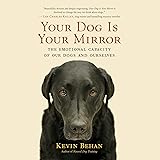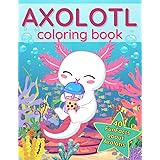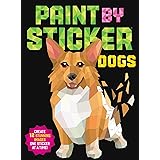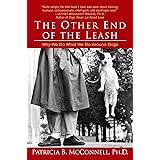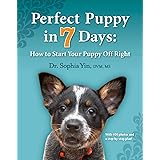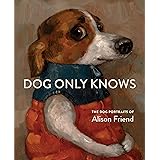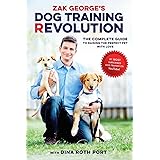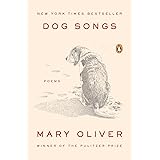Every dog owner understands the profound bond shared with their canine companion, a relationship often strengthened through shared activities. Yet, sometimes, despite our best efforts, a dog may seem indifferent to the very things designed for their enjoyment: toys. Just as a child might prefer a simple cardboard box to an elaborate electronic gadget, some dogs initially find little intrinsic value in toys. I recall a client whose energetic Border Collie would meticulously ignore every fetch attempt, preferring to herd phantom sheep in the yard. This phenomenon, often frustrating for owners, highlights a crucial point: dog toy motivation isn’t always innate; it’s frequently a skill that needs to be cultivated. The video above provides an excellent primer on igniting that spark, and here we will delve deeper into the strategies for building robust toy drive and engagement, ensuring your dog sees playtime as the ultimate reward.
Unlocking Potential: The Versatility of Interactive Dog Toys
The KONG Classic, prominently featured in the video, stands as a paragon of canine enrichment tools, renowned for its multifaceted utility. This particular toy transcends simple play; it serves as a powerful instrument for cognitive stimulation and behavioral modification. For instance, its design allows for the transformation of mundane meal times into engaging brain games, compelling dogs to solve a rudimentary puzzle to extract their sustenance. This process is not merely a distraction; it actively promotes problem-solving skills and delayed gratification, critical components of a well-adjusted canine temperament.
Furthermore, the KONG excels in facilitating crate training, an essential practice for many households. By associating the crate with a high-value, food-stuffed KONG, the negative connotations often associated with confinement are systematically replaced with positive reinforcement. The extended engagement provided by a properly stuffed KONG transforms the crate from a perceived punishment into a personal sanctuary, a quiet retreat where delectable rewards are readily available. Beyond structured training, these toys serve as an invaluable pastime, mitigating boredom and redirecting destructive chewing behaviors toward appropriate outlets. A frozen KONG, as mentioned in the video, further extends this utility, providing a refreshing and long-lasting treat ideal for warmer climates or for dogs requiring prolonged mental engagement.
The Psychology of Value: Building Toy Drive with Food Association
For a dog exhibiting low interest in toys, the initial objective is to imbue the toy with inherent value. Instructor Shannon’s technique of associating a high-value scent or treat with the KONG is a classic example of classical conditioning at work. When a dog consistently encounters a delightful aroma, such as cheese, emanating from a novel object, a positive association is inevitably forged. This process, often referred to as “baiting” or “luring,” effectively primes the dog to view the toy not merely as an inanimate object, but as a harbinger of delicious rewards.
The progression demonstrated in the video, starting with easy accessibility and gradually increasing the difficulty, is paramount. Initially, the KONG with its enticing scent should be presented in plain sight, a few feet away, allowing for immediate success. Each successful retrieval, followed by handler-provided reinforcement (such as a piece of cheese from your hand), solidifies the positive feedback loop. This dual-reinforcement strategy—the self-reward of licking the KONG and the social reward from the handler—exponentially increases the toy’s perceived worth. Consequently, the dog begins to associate not only the KONG with food but also the act of engaging with the KONG *with its human* as a source of gratification. This critical step ensures that the dog’s emerging toy drive is intrinsically linked to interactive play rather than solitary consumption.
Advanced Olfactory Engagement: Elevating Scent Work
As a dog’s enthusiasm for the toy grows through initial food association, the next logical step is to harness their extraordinary olfactory capabilities. Canine scent detection is an exquisite biological marvel, far surpassing human capabilities, and incorporating scent work into toy play leverages this innate strength. Once the dog understands the basic premise of “find the cheese” (or similar cue), the game can evolve to include more challenging hiding spots. This transition from visual cues to purely scent-based location demands heightened focus and mental exertion, effectively turning playtime into a sophisticated cognitive exercise.
During this stage, careful environmental management, as highlighted by Instructor Shannon’s insightful correction, becomes critical. Minimizing extraneous distractions, such as other toys or competing scents, creates an optimal learning environment. This principle of stimulus control ensures that the dog’s focus remains squarely on the task at hand. Just as a chef meticulously preps their mise en place, a trainer must meticulously arrange the environment to maximize the probability of success. Furthermore, the strategic placement of the KONG in slightly more obscure locations, such as behind a piece of furniture or under a cushion, compels the dog to engage its powerful nose, reinforcing the idea that the KONG is a valuable treasure to be unearthed. The tiny bit of scent on the toy acts as a compelling beacon, guiding their exploration and culminating in a rewarding find.
Tapping into Primal Instincts: Leveraging Chase Drive
Beyond olfactory exploration, another powerful motivator lies in the dog’s inherent chase or prey drive. This primal instinct, a vestige of their ancestral hunting behaviors, can be channeled into highly engaging and productive play. The video aptly demonstrates how a simple line or shoelace, tied to a toy, can animate it, transforming it into a “prey” item that dances and darts, irresistibly triggering the dog’s pursuit instinct. This method is particularly effective for dogs who may initially show little interest in static toys.
The handler’s role in this interaction is akin to a puppeteer, manipulating the toy to mimic the erratic movements of small animals. Short, swift movements followed by brief pauses can build anticipation, while sudden jerks simulate an escape, further intensifying the chase. Crucially, maintaining control of the toy ensures that the game remains a collaborative effort, preventing the dog from absconding with the “prize.” Once the dog successfully latches onto the toy, allowing for a brief tugging session reinforces the achievement. This controlled engagement satisfies the grab-bite aspect of the predatory sequence, providing an immensely gratifying experience for the dog. The brevity of these play sessions, as wisely suggested, is key to maintaining high drive; ending the game while the dog is still eager for more ensures that the toy’s perceived value remains exceptionally high for future interactions.
Strategic Toy Management: The Scarcity Principle
It might seem counterintuitive, but the presence of an abundance of readily available toys can paradoxically diminish their appeal. Instructor Shannon articulates this perfectly: if toys are always accessible, they lose their perceived value, akin to an everyday commodity. Conversely, when toys are treated as a scarce and special resource, their desirability escalates dramatically. This principle underlies effective toy management, a crucial, yet often overlooked, aspect of building and sustaining toy drive.
The practice of putting toys away when not in use transforms them into high-value items, much like a prized collectible. Furthermore, placing them in an area already associated with positive reinforcement, such as the kitchen (where food often originates), leverages existing positive associations. The brief, exciting tease of a toy being taken from its “special” spot, animated by the handler, and then promptly returned, creates a powerful anticipatory drive. This “peek-a-boo” strategy, especially effective with young dogs, cultivates an intense yearning for the toy, teaching the dog that human interaction is the gateway to accessing these coveted resources. By controlling access, handlers become the purveyors of fun, strengthening the bond and reinforcing their role as the ultimate source of engaging activities.
Crafting Engaging KONG Fillings: Beyond the Basics
The utility of the KONG toy is significantly amplified by its ability to be stuffed with a variety of delectable fillings, transforming it into an intricate puzzle or a long-lasting treat. As Instructor Shannon demonstrates, a small piece of cheese serves as an excellent plug for the smaller hole, preventing runnier contents from escaping prematurely. Natural peanut butter, devoid of the highly toxic xylitol, is a staple, offering a sticky, appealing base. It is imperative to always check ingredient labels for xylitol, as even small amounts can be fatally dangerous to dogs.
Beyond the basics, the art of KONG stuffing can be refined to create varying levels of challenge and engagement. Layering ingredients adds complexity: a base of mashed banana or plain yogurt, followed by small kibble or liver treats, and then topped with a piece of carrot or a dental stick wedged firmly in the opening. This stratification compels the dog to work through layers, each offering a different texture and taste, thereby extending the engagement period. For an even greater challenge, particularly on warm days, freezing the stuffed KONG overnight provides a refreshing and prolonged enrichment activity. The frozen contents demand greater effort to extract, offering a mental workout and a cool treat simultaneously. Such thoughtful preparation not only enhances the dog’s experience but also reinforces the KONG as a consistently rewarding and stimulating object.


